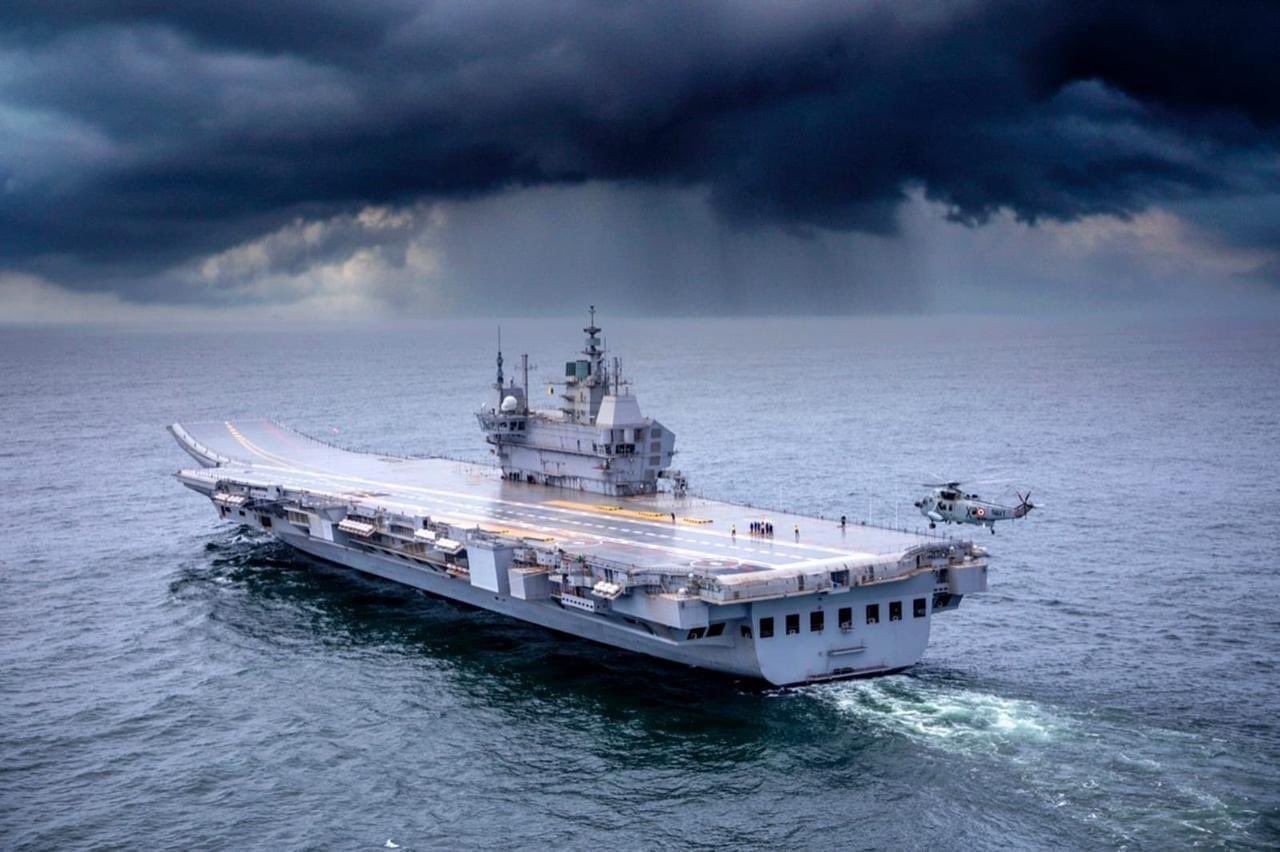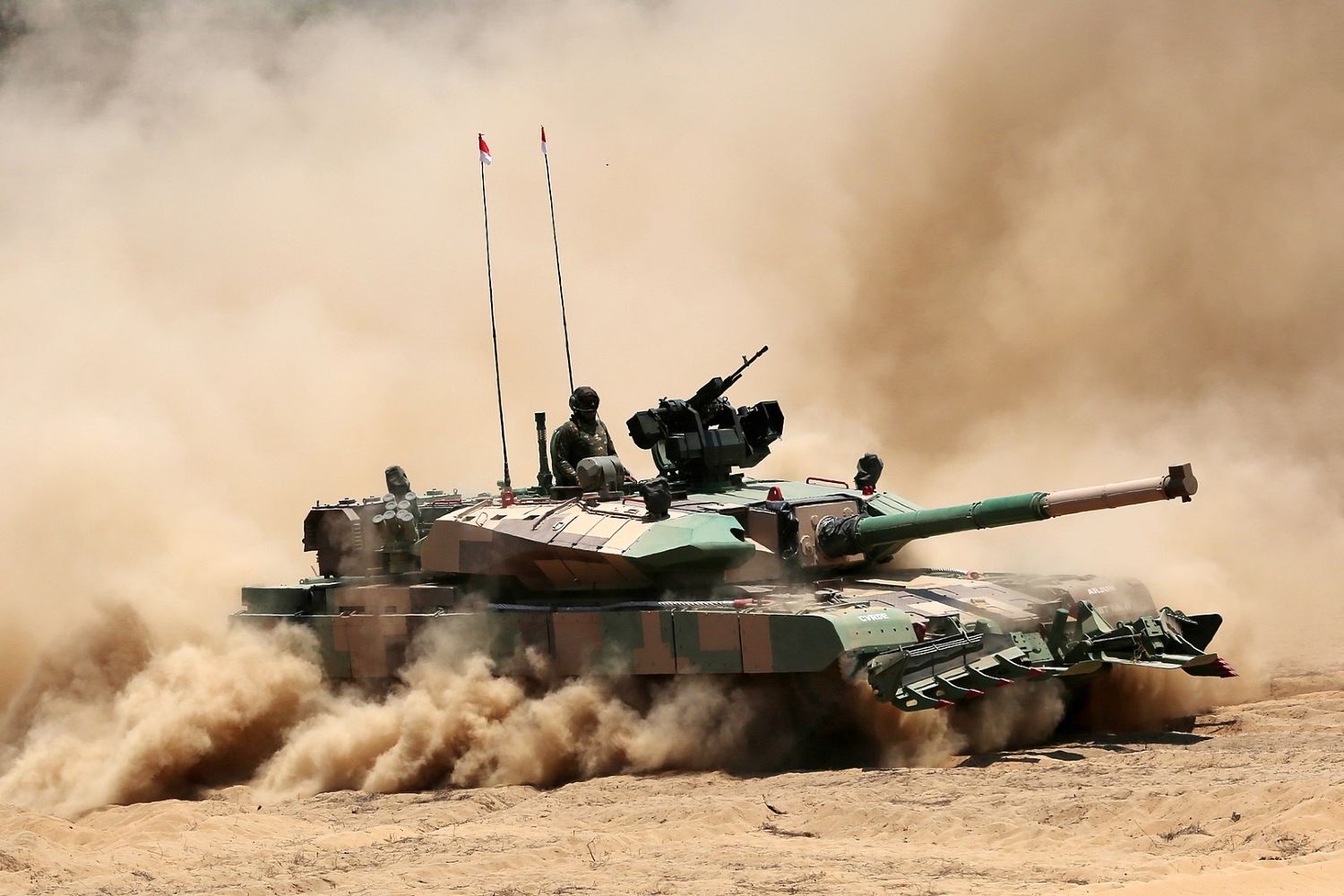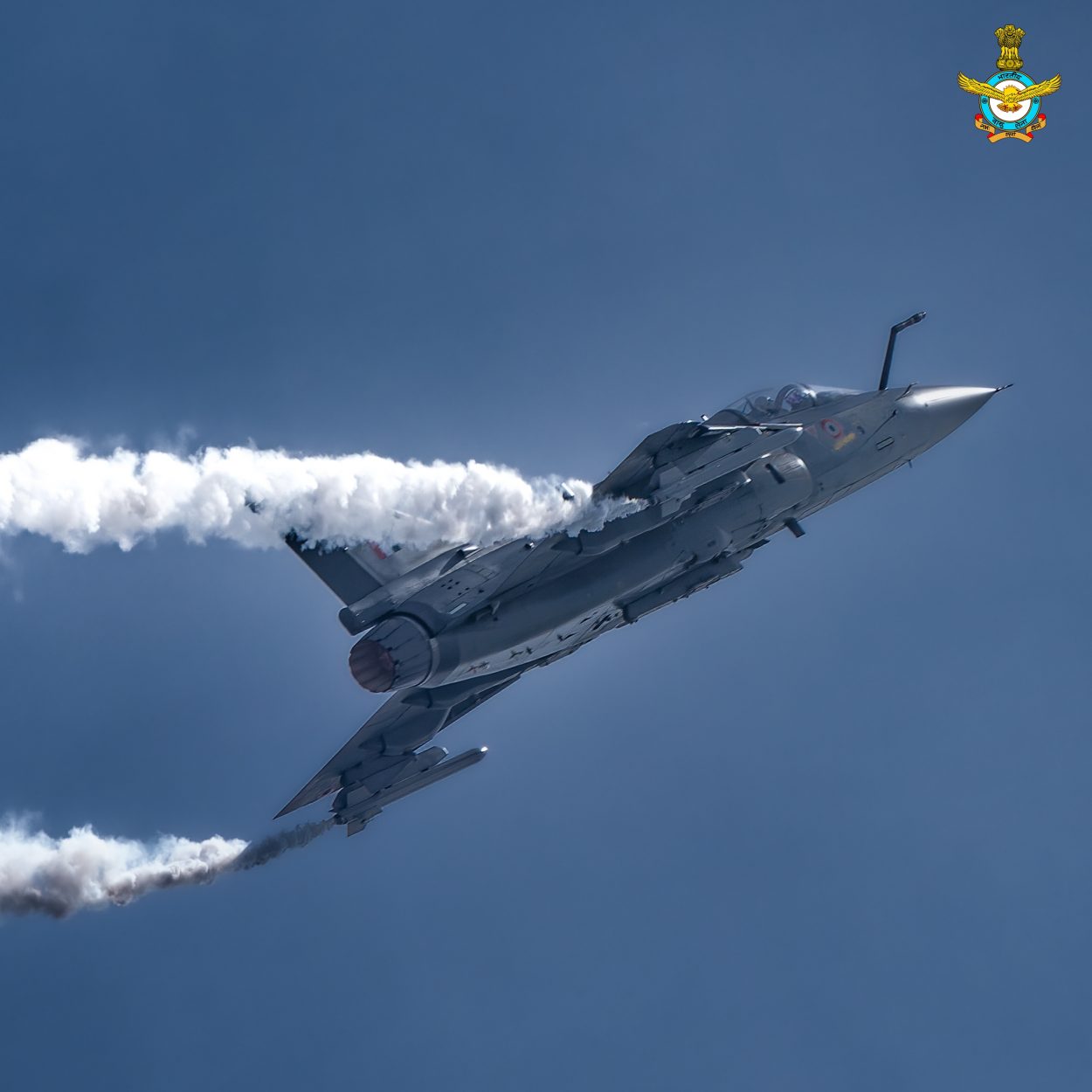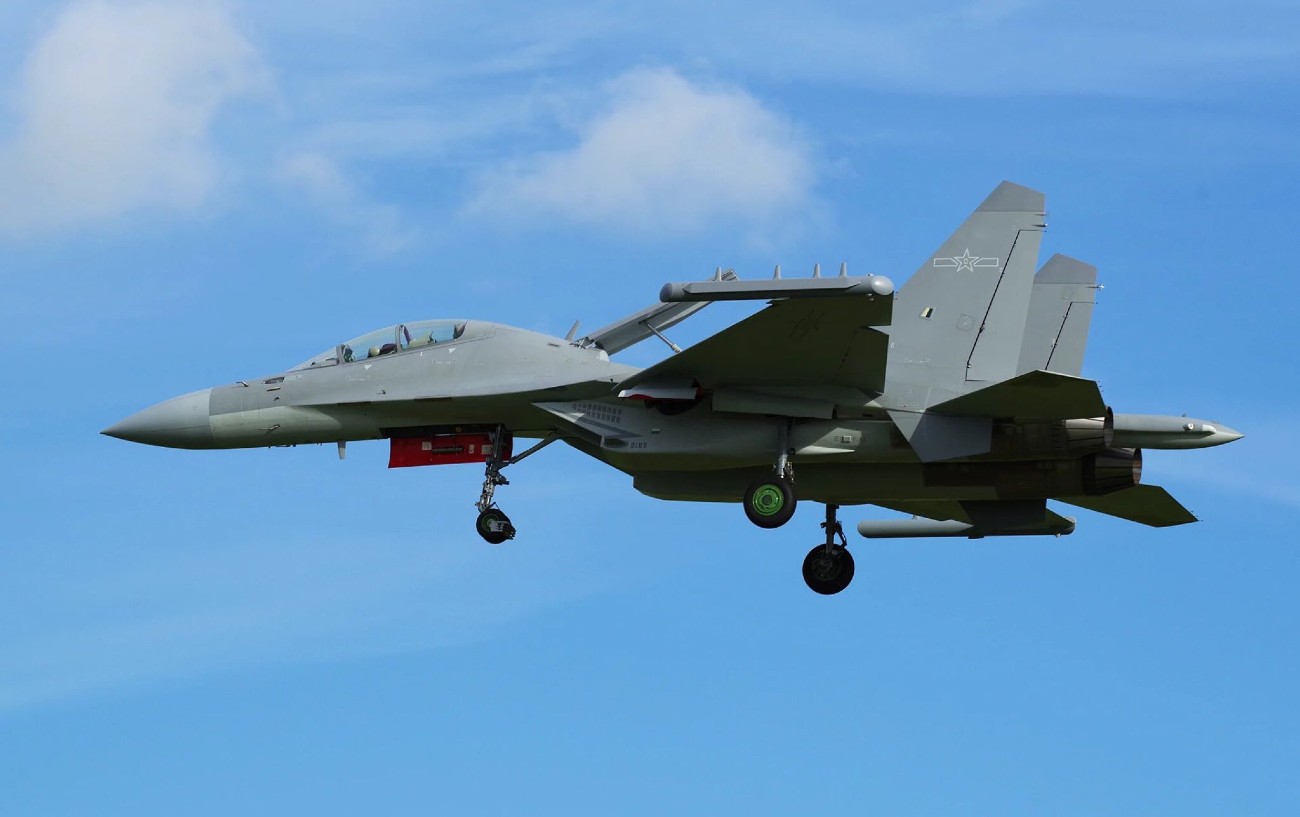India’s Prime Minister Narendra Modi’s vision of ‘Atmanirbhar Bharat’ and the recently advocated slogan of ‘Jai Anusandhan’ (‘Victory to Research’ in English) is perhaps the most motivating message ever given to the nation.
MUST READ: Russia ‘Shot Down’ Over 100 Bayraktar TB2 Drones In The Ukraine War & Kicked Them Out Of Action – Moscow
The message essentially targets the technological prowess and desire to produce world-class equipment in all domains, particularly the military. But a digital appreciation of our actual and existing capability indicates that your vision of genuine ‘Atmanirbhar Bharat’ might still be at least a decade away, if not more.
The purpose and aim of this article are not to denigrate our existing setup involved in producing military hardware. The objective is to place the facts on the anvil as they are, promises made on paper by the Defense Research Development Organization (DRDO), the Hindustan Aeronautics Limited (HAL), and the Ordnance Factories notwithstanding.
The slogan (read directive) of ‘Jai Anusandhan’ given by PM will fructify only and only if we spend a lot more on R&D than we are doing. We need to learn from our prime adversary, China.
From Day 1 of taking over the reins of our great nation, the present government has dedicated itself to nation-building. Be it ‘Swachh Bharat Abhiyan’ or the mantra of ‘Perform, Reform and Transform’ or ‘Make in India’ and now the latest ‘Atmanirbhar Bharat’ and ‘Jai Anusandhan.’
MUST READ: Ukrainian Soldier Calls For ‘Electronic Warfare’ To Hunt Russia’s Lancet UAVs That Wreaked Havoc On NATO Artillery
But most of these directions have merely remained slogans. Such a state has prevailed because of poor response from ordinary citizens on the one hand and mere ‘paper’ promises by major institutions, namely DRDO, HAL, and Ordnance Factories.
These institutions deliberately propose attractive timelines to produce world-class equipment but continue to shift the timeline. They have no accountability towards delays of years and decades.
I will ignore other issues and focus only on ‘Make in India’ and ‘Atmanirbhar Bharat.’
India’s Industrial Base
An entire industrial base is required to make a nation great. Of these industries, the defense industry occupies the numero uno position. Unless we can defend ourselves against known adversaries, we cannot survive. To defend, the military needs to be equipped with world-class military hardware.
The defense industry, headed by the DRDO, has miserably failed to meet the aspirations of the military. I omit ISRO, the only organization to have delivered and continue to deliver. DRDO has failed to produce a single weapon platform that can be termed world-class.
As an air warrior, my focus has been on flying machines, and after reading my ‘bird-brained’ views on the employment of airpower, an extremely eminent foot soldier from the armored corps asked me why I am focused entirely on the air force.
He added that the air force alone could not win a war. I responded politely and said, “I do not discuss the ‘air force.’ I discuss airpower. The two are not the same. Let me be candid: Airpower by itself cannot win a war, but more important is that in present times no war will ever be won without airpower.’ Airpower can deliver within hours of the ‘go ahead’ given.
Status Of Strike Elements
When discussing military hardware, I focus on strike elements, the offensive complement of military hardware. The current status of technology will not enable us to produce any big-ticket platform. For example, the construction of the indigenous aircraft carrier Vikrant is a ‘baby’ step in the right direction.

However, for INS Vikrant to convert itself from a ‘floating platform’ (at present) to an offensive platform is still quite a distance away. Imported LM-2500 engines still power it. It can only become quasi-operational if and when India buys a carrier-borne aircraft from a foreign vendor.
The essential component of an operational Carrier Battle Group (CBG), a dedicated fixed-wing AEW/AWACS/AEW&C aircraft, is not on the drawing board. The current AEW asset KAMOV Helicopter of Russian origin, is a poor substitute for the role.
Currently, Indian Navy’s CBG cannot operate in the hostile and potent air defense environment of our adversaries, Pakistan in particular, because of a lack of adequate and continuous surveillance capability and the absence of long-range strike elements.
MiG-29K, with a minimal operational radius of action, will demand the aircraft carrier to operate within 200-300 km of the intended target. For instance, if our carrier is required to operate within 300 km of the Makran coast, it will be highly vulnerable to Pakistan Air Force strike elements equipped with long-range anti-shipping missiles.
DRDO, HAL, and Ordnance Factories have failed the nation — a harsh unpalatable truth. Half-hearted attempts to develop a modern tank and a world-class fighter are stories of falsehood and fake claims by DRDO and HAL.
It remains on the same track. Such platforms require at least a decade to develop, followed by another decade to be converted from prototype platforms to war-capable machines, which will remain in service for at least five decades.
Hence the user (military) and the developer must have a vision of around five decades or more that will enable a platform to remain in service with the option of a mid-life upgrade. Even if the quality is achieved, the industry must be able to produce the quantity required to meet military requirements, which is enormous.
The development story of the Arjun tank by DRDO and LCA by HAL will highlight the incompetence of our defense production industry.
A brief mention of the major platform development records of DRDO and HAL is essential to highlight their individual and collective incompetence. Proclaiming unrealistic deadlines and shifting deadlines by decades has been the norm.
Real success stories of producing world-class equipment remain a mirage. Our soldier did not even have a comparable personal weapon. INSAS rifle can be termed as an ‘apology’ for a lethal personal weapon, so very essential for a soldier.
Arjun Tank
The Indian Army’s armored corps has existed for over seven decades, tracing its roots to the Second World War, and has fought in every one of India’s wars with neighboring Pakistan. Sixty-three armored regiments (the equivalent of battalions) are allocated to Armoured, Mechanised Divisions and Independent Armoured Brigades.

The brilliant and brave soldiers of the Indian Army won the 1971 war with imported tanks. The decision to produce an indigenous Indian tank was made in 1972, shortly after the Indo-Pak War of 1971. In 1974, the state-run DRDO was tasked with developing the tank.
DRDO decided to make the tank called Arjun, a primarily Indian design. It was to be a 40-ton vehicle armed with a 105-millimeter gun. It would be small enough to be strategically mobile, capable of being shuttled on internal lines (roads and railroads) to vital sectors along the long border with Pakistan.
Combat Vehicles Research and Development Establishment (CVRDE), part of DRDO, was to design the hull, armor, turret, gun, and running gear. The main gun and engine would be imported. Unfortunately, India’s defense-industrial base was nowhere near capable of making such a vehicle.
The production entity’s lack of expertise, willpower, obstinate Indian bureaucracy, and well-oiled red tape machinery ensured that a genuine fighting tank was never produced.
Any visionary development agency would have also started Research & Development to develop indigenous main guns and engines. But DRDO conveniently slept. Even 50 years later, we are in the same state.
To complete the Arjun tank story, the tank is fitted with Kanchan armor, a locally designed composite similar to British Chobham armor.
Kanchan is believed to be capable of surviving point-blank shots from the 125-millimeter gun of Indian T-72 tanks. While providing protection, the weight ballooned from the original 40-ton specification to 62 tons. But in this process, Horse Power (HP) to Weight ratio slipped from an impressive 1:35 (as claimed at the design stage) to 1:22.
An unusually long development period resulted in the equipment becoming ‘OBSOLETE’ even before induction. However Indian Army was ‘forced’ to acquire nearly 100 tanks. This was done to keep the lathe machines in CVRDE turning.
On-field performance of the monster tank left a lot to be desired. Today, Arjun Mk 1 has a 120-millimeter gun, advanced composite armor, a 1,400 HP turbocharged engine, advanced fire control, and thermal sights. Although the tank’s specifications are impressive, the ‘tankmen’ of the Indian Army do not want the equipment to be a reality.
DRDO insists on producing world-class equipment and weapons independently but has failed in every instance to date. DRDO refused to admit its inability to build the tank on time and schedule. DRDO is busy designing Arjun Mk II, which will allegedly contain many improvements over the original Mk I.
The timeline of availability for frontline formation is not yet known. Considering the current obsolete/obsolescent state of tanks, Indian Army would much rather buy an overseas tank.
LCA Tejas
The current status of LCA (Tejas Mk I) is as follows: “Of the 123 LCA fighters already ordered, 20 is in the Initial Operational Clearance (IOC) and another 20 in the more advanced Final Operational Clearance (FOC) configuration, according to officials.
The remaining 83 fighters will come with additional improvements over FOC aircraft,” as posted on the HAL website on September 01, 2022.

- All LCA variant flying in operational IAF Squadrons, a total of 40, is yet to obtain FOC certificate.
- The current LCA is equipped with a US aero-engine.
- Balance 83 LCAs ordered by IAF ‘might’ be delivered by 2030. HAL has not stated a firm timeline for delivery.
- Since India does not produce any Precision Guided Munition, smart weapons, or Air-to-Air Missiles, matching imported weapons with the LCA platform will be an uphill task.
- LCA has no ‘known’ integral Electronic Counter Measure or Electronic Counter-Counter Measure suite.
- The first lot of LCA was handed over to IAF after the air force was ‘FORCED’ to grant (rather than accept) 28 concessions to HAL. It may be interesting to mention that PAF and PLAAF pilots are unlikely to grant any concessions to IAF pilots flying LCA involved in air combat with JF-17s or J-20S.
- India is unlikely to have an indigenous aero-engine by 2030, even if a French/British/US contract is signed in the near future.
- Utilization of the LCA fleet will remain a question mark.
- Has Naval Variant LCA program been shelved? TEDBF is a dream on paper.
Status Of LCA Mk II
- As of date, flyable LCA Mk II is yet to roll out of the HAL hangar. HAL’s cosmetic (read fake) deadlines have already slipped. The trend is unlikely to change.
- As a pilot having spent nearly 30 years in the cockpits of MiG-21s and MiG-29s, I do not foresee LCA Mk II getting airborne before January 04, 2026, to coincide with the 25th anniversary of the first LCA getting airborne, if at all.
- If that is so and the development of LCA Mk II does not meet any hurdles, the first operationally capable LCA Mk II will likely not be available before 2036.
- Currently, the operational details of LCA Mk II are not in the public domain.
But if it is to match the adversaries flying machines in and around Indian skies, it must have:
- Production rate of at least 18 aircraft a year.
- Should have indigenous weapons if developed by India by then.
- Should have Lo-Lo-Lo Radii of Action of at least 500 km with a full weapon load of 4 tons.
- Should have an integral ECM/ECCM suite capable of neutralizing AAMs of that era.
- Should have mid-air refueling capability compatible with AAR platforms with IAF.
- Should have an indigenous AESA radar having Search/Track capability of at least 200/120 km.
- Should be equipped with suitable Beyond Visual Range (BVR) AAM matching with AESA Radar capability.
- It should have a pilot-friendly digital cockpit display.
- Should have an integral Radar Warning Receiver (RWR).
- It should have a ‘ZERO/ZERO’ pilot escape system.
- Should have FBW and FADEC systems.
- Should have dry regime supersonic capability.
- Thrust to Weight ratio of a fully loaded LCA MkII (4 Tons Weapon + Max Fuel) should not be less than 0.8.
- And many more, but enough for the time being.
Likely State of IAF In 2036 (Fixed Wing Strike Element Only)
- MiG-21 Variants would have been moved to display platforms.
- Jaguars would complete nearly 60 years if still in service.
- MiG-29s and Mirage-2000 would have become nearly 50 years old (acquired in 1985-87).
- Su-30 variants will be nearing 40 years of service. Effects, primarily adverse, of the ongoing Russia-Ukraine war will affect fleet availability in the foreseeable future.
- Rafales will be nearly 20 years old.
- Total squadron strength will shrink between 22-26.
- IAF will comprise obsolete and obsolescence strike elements.
- Does LCA Mk II join IAF by then?
India’s Indigenous Capability: Future Options
HAL does not produce most of the above capabilities except the airframe. Will it acquire and equip LCA Mk II with the above-stated capabilities? At present, it is a question mark. Hence we will have to go through the same process as in the case of LCA Mk I.
In the past 35 years (1987-2022) performance of HAL and its ancillaries has been sub-standard. Our indigenous capability has languished at an abysmally low level. Why? HAL must answer that question.
‘Atmanirbhar Bharat’ is a wonderful slogan, provided it gets translated into action. At present, we are a few lightyears away from achieving that. The most formidable air force in the world, the USAF, is supported by the private defense industry, such as Lockheed Martin and Boeing, unlike HAL, which is a state-controlled autonomous entity with no accountability. The solution does not lie in giving slogans. The answer is to break up HAL into private entities and demand output.
Dassault Aviation of France has less than 20% strength compared to HAL. Look what it produces! The concept of ‘perform or perish’ must also apply to such government establishments, as is happening to bureaucracy by weeding out the non-performing deadwood. HAL is in the same category.
Press reports have quoted that the current Chief of Air Staff (CAS) has ‘accepted’ the LCA Mk II but has been categorical in stating that the acquisition of LCA Mk II is only an interim measure. What happens between 2022 and 2036 is of greater significance than the development of LCA Mk II.
The concern of CAS is genuine and must be viewed with professional maturity by the powers that be. The past performance of HAL does not infuse any degree of confidence about the availability of operational LCA Mk II by 2036.
Future Potency/Capability of Indian Military
The capability of the Indian military will depend entirely on whether the three services are equipped and provided with the matching, if not the best, platforms to keep twin threats from China and Pakistan at bay. Nuclear deterrence is not meant to take care of ongoing skirmishes at fully active and volatile borders with these nations.
In smaller neighboring countries, such as Myanmar and Sri Lanka, instability does not augur well for India’s long-term security interests. China has already trapped both of these nations with Debt Diplomacy. The next obvious step of China might be to move military (read PLAAF) elements into these nations.
I maintain that PLAAF operating from Tibet is no threat, but PLAAF operating from sea-level airfields of these nations will be a formidable threat. India will then face a truly volatile ‘two-front war’ situation. The probability of China moving PLAAF elements in these two nations is higher than 50%, hence a threat.

In the prevailing geo-strategic scenario and ‘terrorism’ as an accepted instrument of state policy of neighboring Pakistan, the Indian military (not IAF) needs platforms that can be brought to bear on the adversary in hours. The only component that meets this challenging attribute is air power.
Powers that be would do well to take a realistic and holistic view of the situation as it obtains and not base their decisions on presumptuous imagination. Airpower is a vital component of any military, which can and will provide a favorable conflict termination situation to enable politicians and diplomats to negotiate the peace treaty from a position of strength.
Possible Consequences Of Further Delay
We need to look at Israel and how it has been fighting terrorism and existential threat successfully for over 60 years by using airpower within minutes. Postponing, or worse still, canceling the acquisition of strike elements from foreign vendors, is a disaster waiting to happen.
Immediate acquisition of suitably evaluated strike element for IAF is the crying need of the hour. Let the ‘imaginary mirage’ of LCA Mk II not lull us into complacency. We are already twenty years too late in the inducting new platform. The acquisition proposal for 126 fighters was placed before the government in 1996. We acquired merely 36 Rafales. HAL cannot fill the void.
We must identify our shortcomings during peacetime and not on the battlefield. A stark difference between Indian and foreign military vendors is simple; Foreign vendors talk about the capability of their machines in the ‘present tense.’ Indian defense production industry talks in ‘future tense.’
For ‘Jai Anusandhan’ to produce results, increase R&D funding to at least 1% of GDP. No ‘R&D,’ no ‘Anusandhan.’
- Gp Cpt TP Srivastava (Retd) is an ex-NDA who flew MiG-21 and 29. He is a qualified flying instructor. He commanded the MiG-21 squadron. He is a directing staff at DSSC Wellington and chief instructor at the College of Air Warfare. VIEWS PERSONAL OF THE AUTHOR
- Follow EurAsian Times on Google News




